Deploying Microsoft Store Apps through the Microsoft Endpoint Admin Center can be a straightforward process, but it often comes with its own set of challenges. Over the course of my work in IT operations for SteelHaven, I have encountered several errors while deploying these applications. This blog post will highlight some of the most common issues and provide solutions to help streamline the deployment process.
Common Error: Invalid Latest Package Version
One of the errors I frequently encountered when selecting an app in Microsoft Store Apps (new) was the message: “The selected app does not have a valid latest package version.” This error indicates that the app package being referenced does not have a valid version in the Microsoft Store, which can hinder the deployment process.
Screenshot of the Error
Here is a screenshot of one of the errors I encountered during the deployment process.
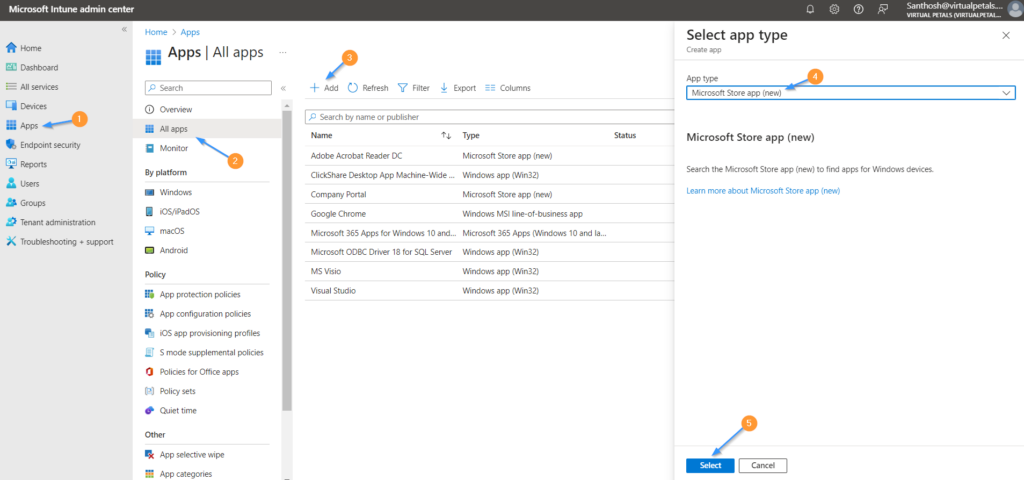
Now if I try to add a Application it fails.
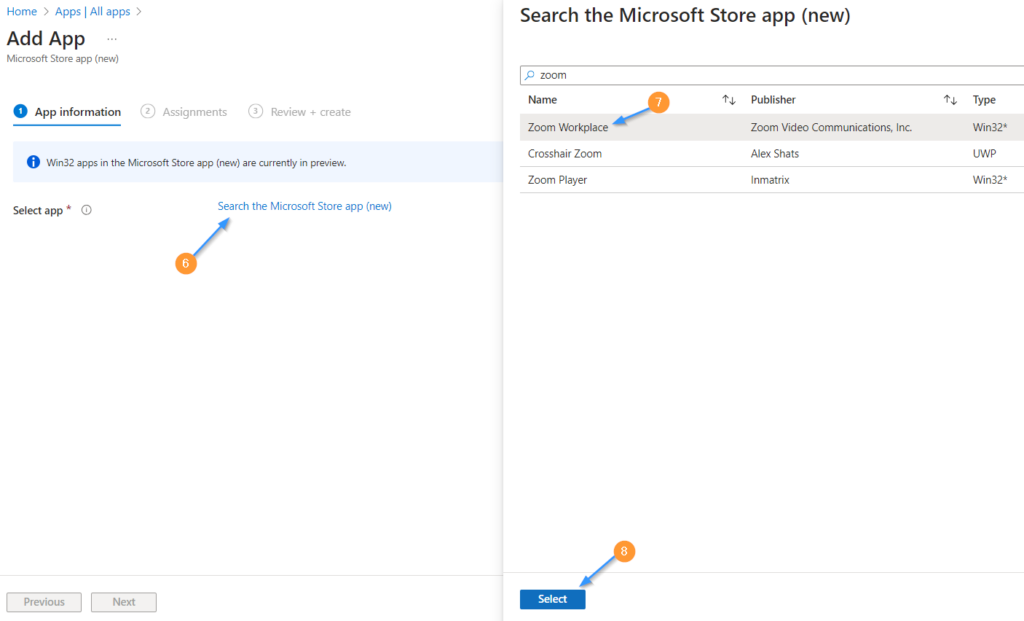

Using Microsoft Graph to Deploy Apps in Microsoft Endpoint Admin Center
Step 1: To solve this error, we will push the desired application from Microsoft Graph to Microsoft Endpoint Admin Center. This approach allows us to directly manage and deploy the application, bypassing the issue with the invalid latest package version.
Search for Microsoft Explorer and click on the first link.
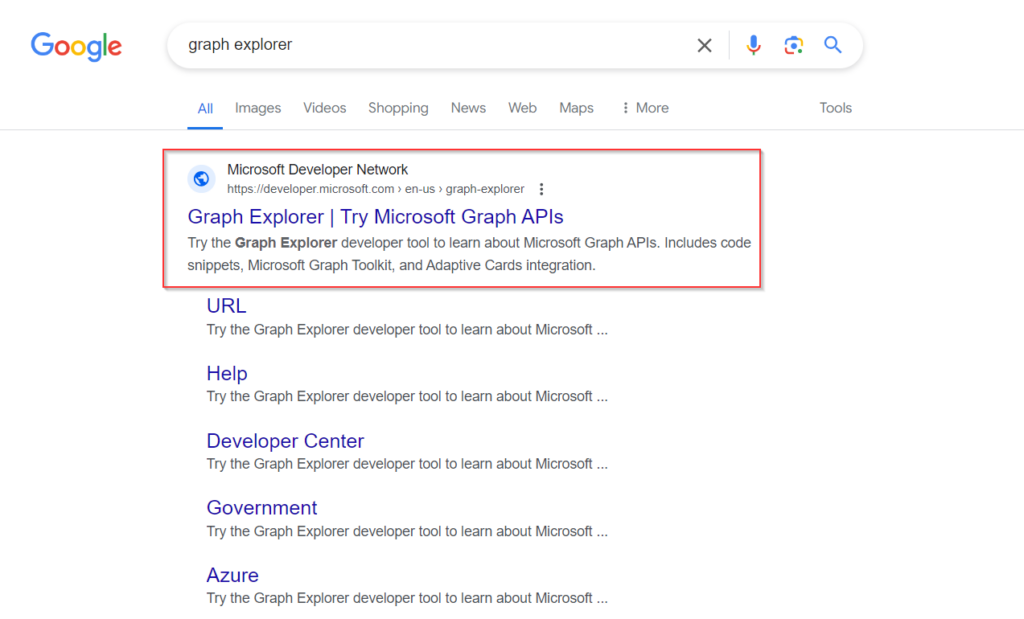
Step 2: Once we open the Microsoft Graph Portal, we log in using our credentials and accept the required permissions to access Microsoft Graph API. This step is crucial as it grants our application the necessary permissions to interact with Intune and Microsoft Endpoint Manager resources effectively. By accepting these permissions, we ensure that our deployment process can proceed smoothly, allowing us to push applications and manage settings within the Microsoft Endpoint Admin Center with confidence.
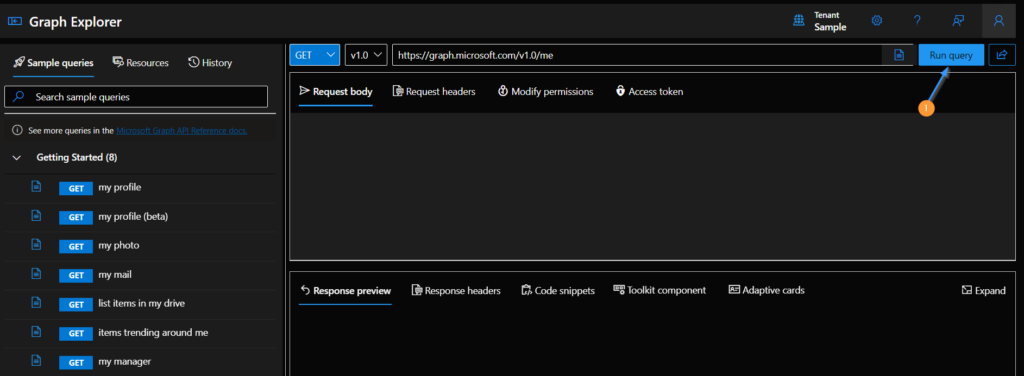

Step 3: Now, let’s configure a few settings. Select POST, Peta, and add this URL: https://graph.microsoft.com/beta/deviceAppManagement/mobileApps. After adding the URL, click on “Modify Permissions” and proceed to click on “Consent“. This action grants the necessary permissions to connect to the Microsoft Endpoint Admin Portal, enabling seamless interaction and management of mobile apps through Microsoft Graph.
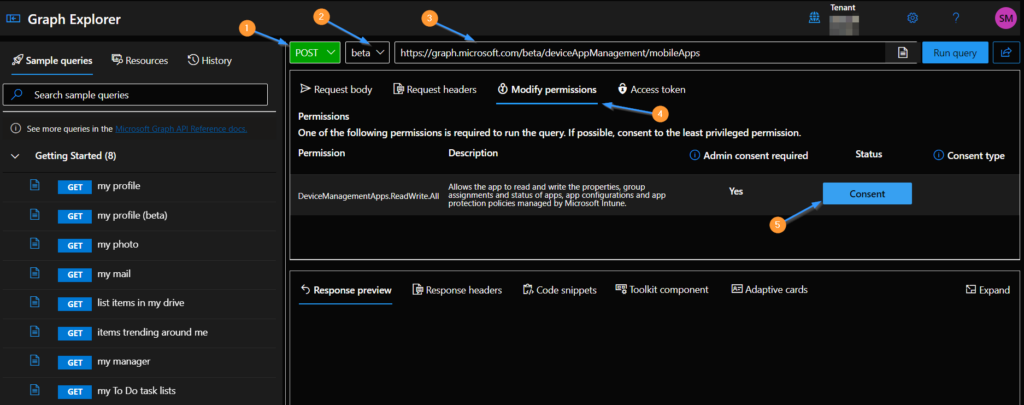
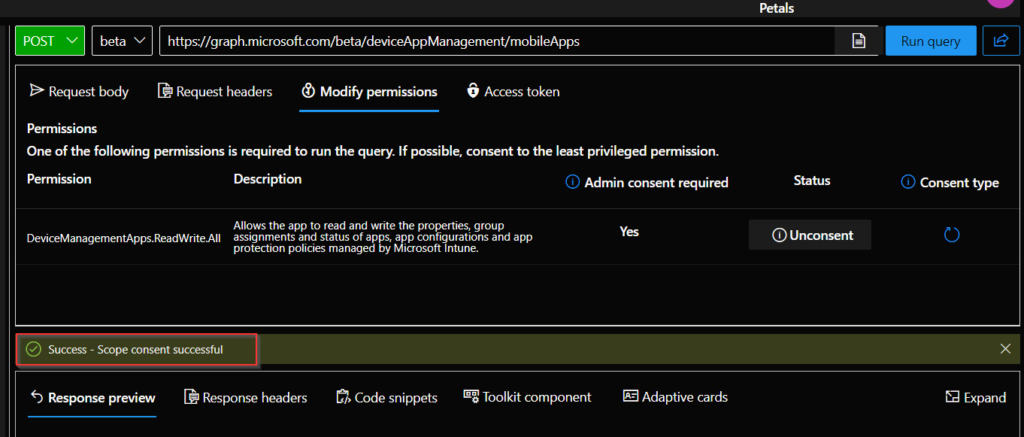
Creating .json script to Deploy the Application
Step 4: Now, let’s begin creating the JSON script to deploy the application. This script will include essential details such as the app’s package information, deployment settings, and any specific configurations required for deployment via Microsoft Graph. Crafting this script accurately ensures that the application deployment process is configured correctly and aligns with our organizational requirements.
This is the required script to deploy the application:
{
"@odata.type": "#microsoft.graph.winGetApp",
"displayName": "",
"description": "",
"publisher": "",
"packageIdentifier": "",
"installExperience": {
"runAsAccount": "user"
}
}
To complete this script, you need to fill in the following required fields:
- displayName: Provide the display name of the application.
- description: Enter a brief description of the application.
- publisher: Specify the name of the publisher or developer of the application.
- packageIdentifier: Include the unique package identifier (e.g., app ID or package name) of the application.
Ensure that these fields are accurately filled out to ensure proper deployment and configuration of the application via Microsoft Graph.
Finding the Package Identifier of the App
Step 5: Follow the following steps to get he Package Identifiers Value.
1.Visit apps.microsoft.com: Open your web browser and go to apps.microsoft.com.
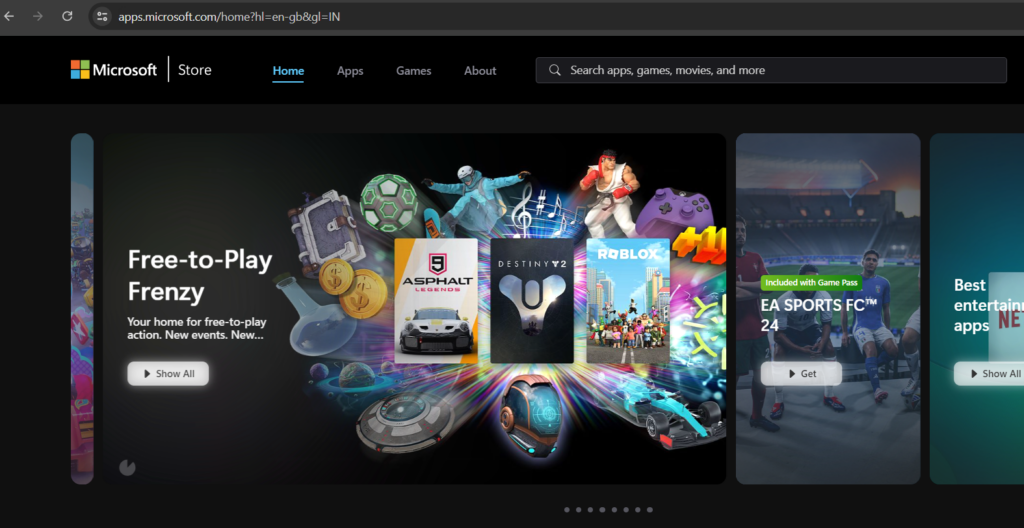
2.Search for the Application: Use the search functionality on the website to find the application for which you need the Package Identifier.
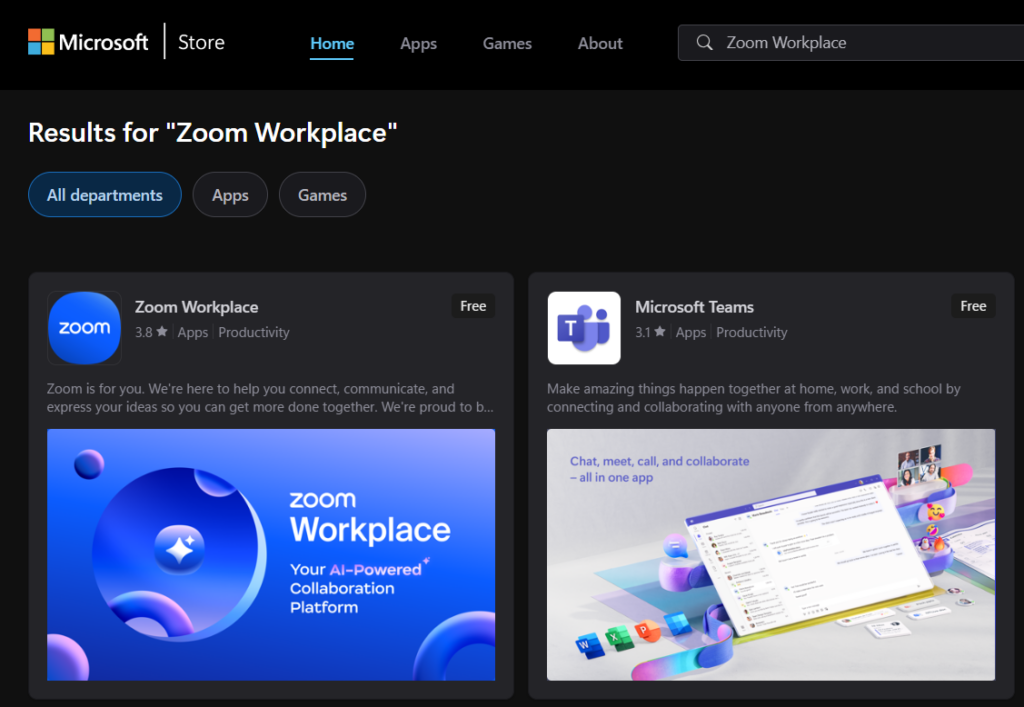
3.Inspect the URL: Look at the URL of the application’s details page. The Package Identifier is often part of the URL structure.
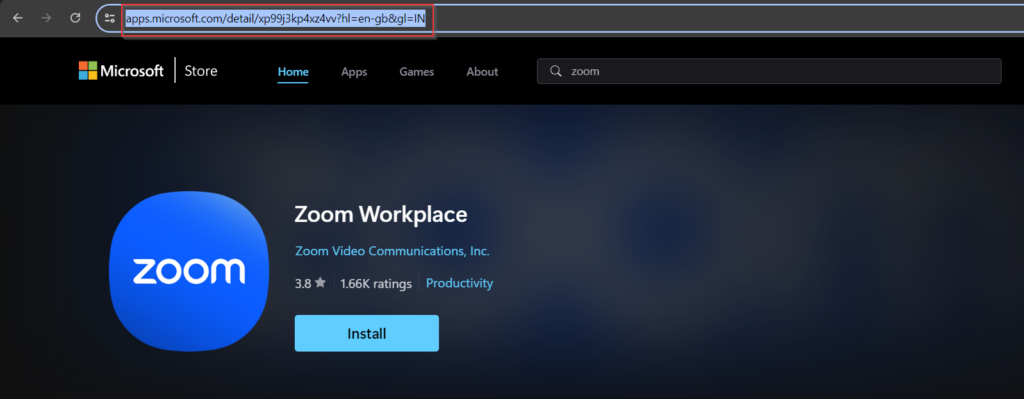
4.Identify the Package Identifier: Within the URL, locate the segment that contains the Package Identifier. It may appear as a series of characters or numbers that uniquely identifies the application.

5.Convert Package Identifier to Uppercase: Note down the Package Identifier from the URL and convert it to uppercase, if required. This identifier is case-sensitive in some deployment scenarios.


Step 7: Once your script is ready, click on “Run Query” to execute it. This action sends the deployment request to Microsoft Graph. Then, check the Intune portal to verify whether the application has been successfully created. Ensure that all the app details are correctly listed and that the application is available for installation on target devices.
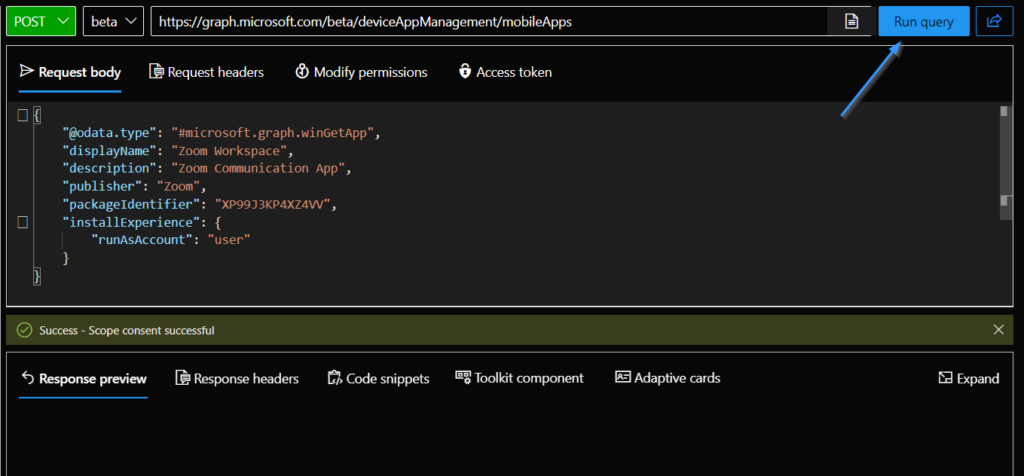
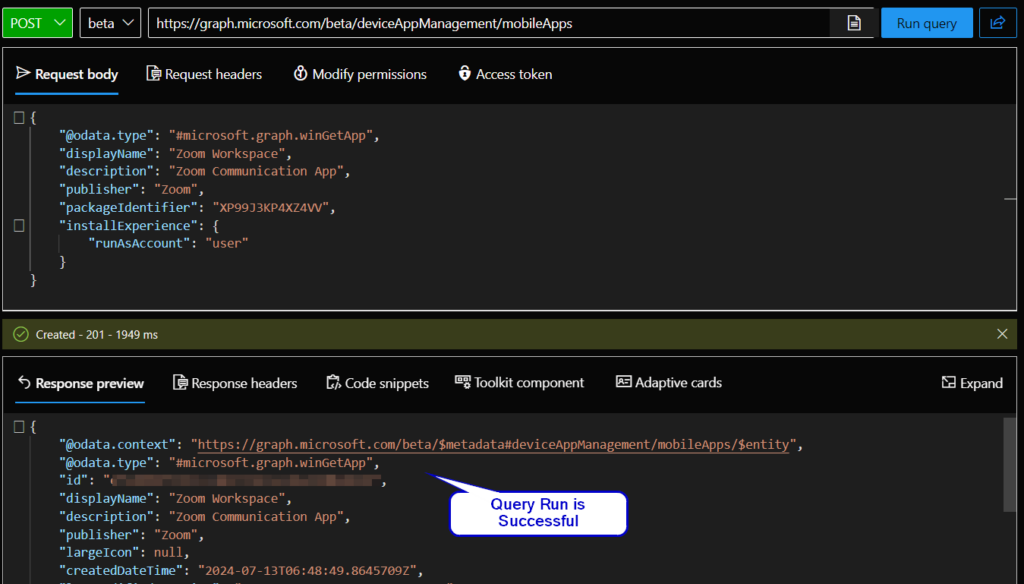
Now lets check in the Endpoint Admin Portal
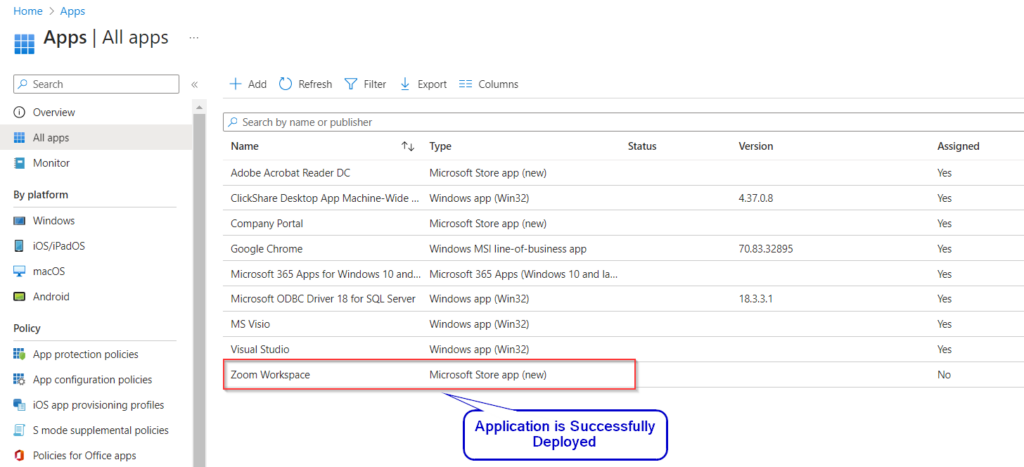
Step 7: Assign the App to a group that contains Intune Enrolled Device and check the installation from the Company Portal of the device.
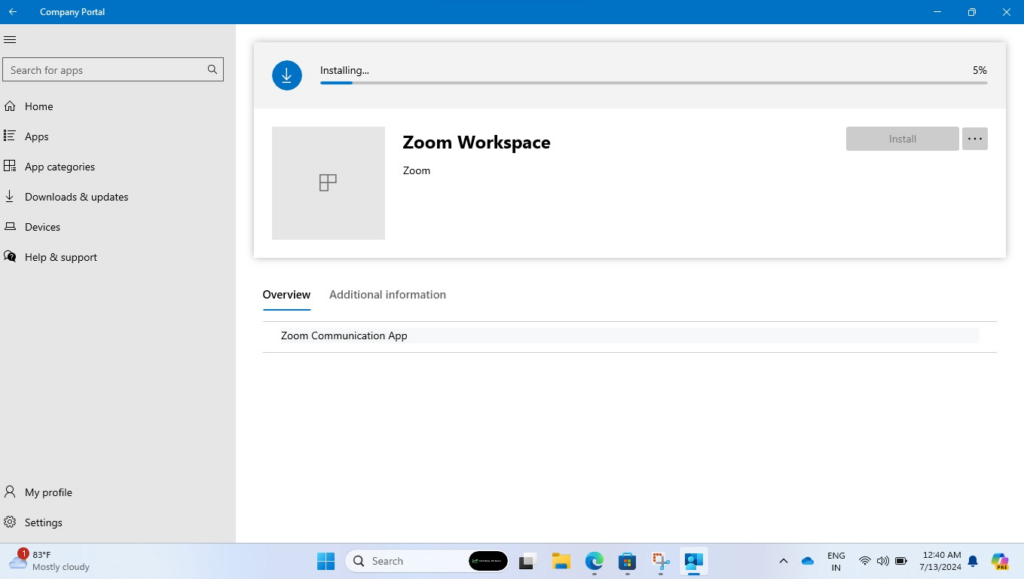
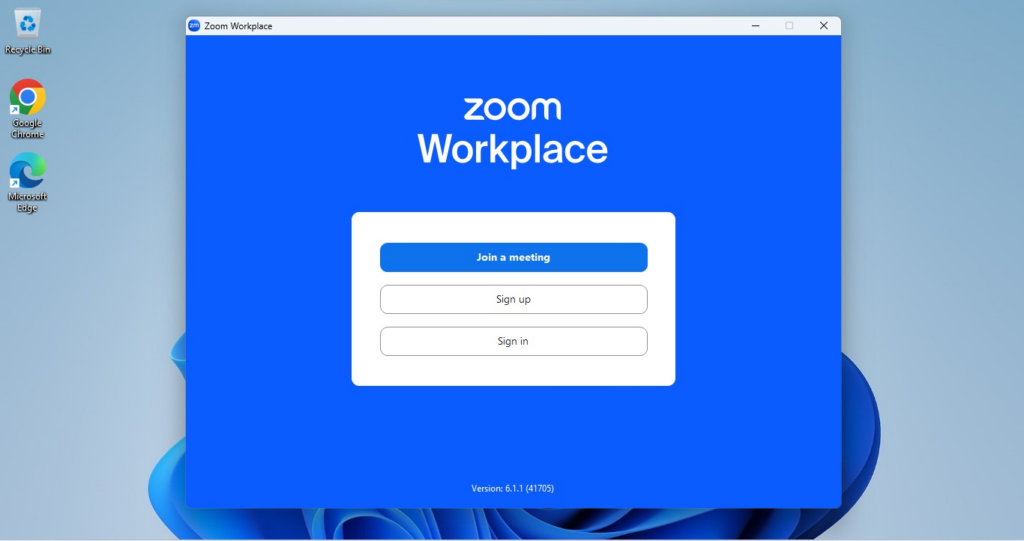

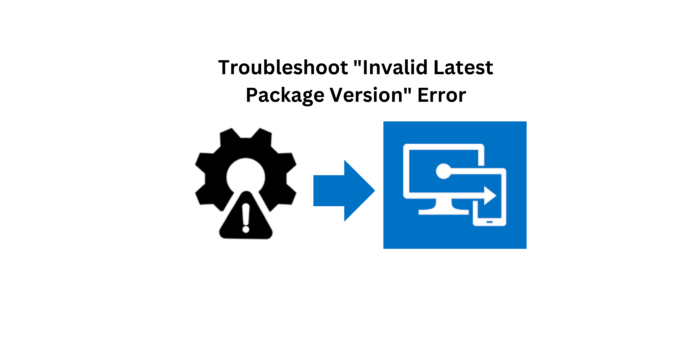

This is awesome. My gratitude forever to the person who can deploy Webex in this matter. I get it to install, but it reports as failed. Every. Single. Time.